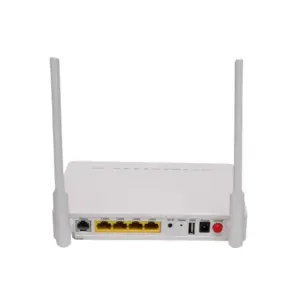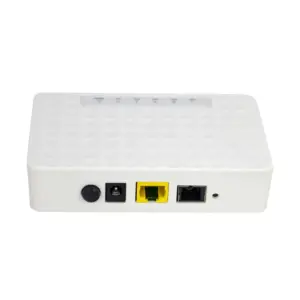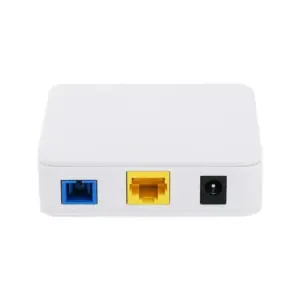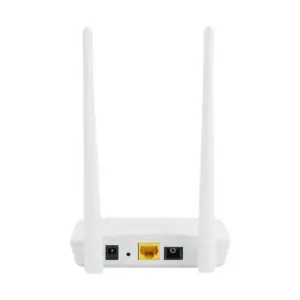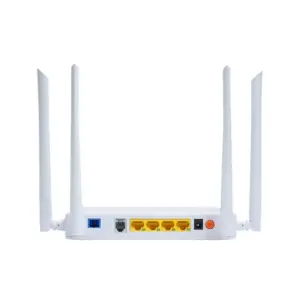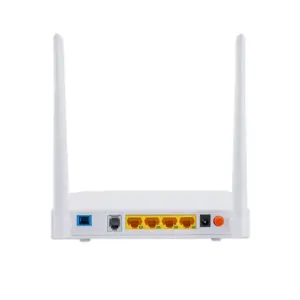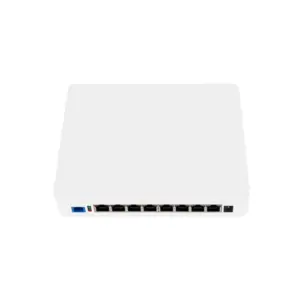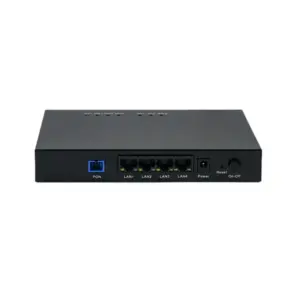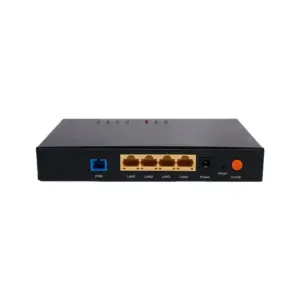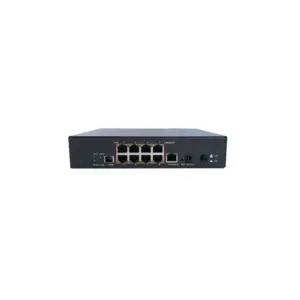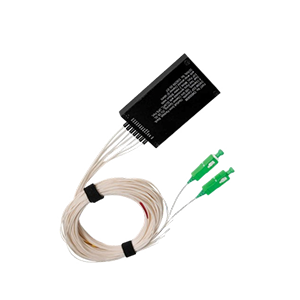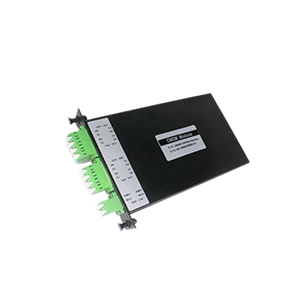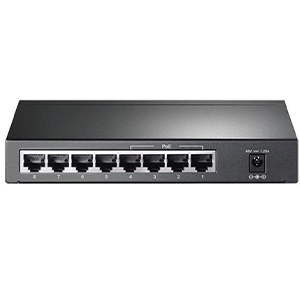Welcome to this blog, today I will introduce you to optical network terminals (ONTs), which are crucial devices in fiber optic networks. Let us understand the definition, role and position of ONT in the optical fiber network.
I. What is an optical network terminal
-
Basic definition: An optical network terminal is a device or node in an optical fiber network. It is used to connect the optical fiber network and end-user equipment to realize the transmission, reception and processing of optical signals.
Main functions:
-
Optical signal transmission: Optical network terminals are responsible for receiving optical signals and transmitting them to terminal equipment, or receiving optical signals from terminal equipment and sending them to the optical fiber network.
-
Optical signal processing: Optical network terminals can decode, process and convert received optical signals to ensure the quality and stability of optical signals.
-
Interface conversion: Optical network terminals can realize conversion and connection between different types of optical fiber interfaces, so that different types of optical fiber equipment can be interconnected.
-
Network management: Optical network terminals also undertake the functions of optical fiber network management and monitoring, including network status monitoring, fault diagnosis and processing, etc.
-
Position and function in fiber optic networks:
- Optical network terminal is a key node in the optical fiber network. It is the bridge between the optical fiber network and end-user equipment and is an important part of realizing optical fiber network communication.
- It has an important function and status in the optical fiber network, which directly affects the transmission quality of optical signals and the stability and performance of the network.
II. Working principle of optical network terminal
Working mechanism and internal structure:
- Optical network terminals usually consist of optical receivers, optical transmitters, optical modulators, optical demodulators, electronic chips, interfaces, etc.
- When the optical signal enters the optical network terminal, the optical receiver is responsible for converting the optical signal into an electrical signal, which is then processed and decoded by the electronic chip, and finally the data is transmitted to the terminal device.
- When it is necessary to send an optical signal, the optical transmitter converts the electrical signal into an optical signal, modulates it into a specific format of optical signal through an optical modulator, and then transmits it to the optical fiber network through the optical fiber.
Interaction and data transmission with fiber optic networks:
- The optical network terminal is connected to the optical fiber network through an optical fiber interface and can receive and send optical signals.
- When an optical signal enters an optical network terminal, it is received and converted into an electrical signal, which is then processed and decoded by an electronic chip and finally transmitted to the terminal device.
- When a terminal device needs to send data to an optical fiber network, the data is first converted into an electrical signal, then converted into an optical signal through an optical transmitter, and transmitted to the optical fiber network through the optical fiber.
Workflow diagram:
- Receiving stage: The optical network terminal receives the optical signal from the optical fiber network, converts it into an electrical signal, and transmits it to the terminal device after internal processing.
- Sending stage: The terminal equipment generates data, which is converted into optical signals through the optical network terminal and transmitted to the optical fiber network through the optical fiber.
Optical network terminals realize the transmission, processing and exchange of optical signals through the combination of optical and electronic technologies, and are a vital component of optical fiber networks.
III. Application scenarios of optical network terminals
Application in home network:
-
Optical fiber broadband access: As an important part of the home optical fiber broadband network, optical network terminals are responsible for converting optical fiber signals into data signals required for the home internal network to achieve high-speed broadband access.
-
Multimedia services: Optical network terminals can support the transmission of multimedia data, including high-definition video, audio streaming, etc., to meet the needs of home users for multimedia content.
-
Smart home applications: Combined with smart home devices, optical network terminals can control and manage home smart devices, such as smart lights, smart cameras, etc.
Application in enterprise network:
-
High-speed data transmission: Optical network terminals undertake the task of high-speed data transmission in enterprise networks and can meet the needs of enterprises for large-capacity data transmission.
-
Network access management: Optical network terminals manage and control access to enterprise networks to ensure network stability and security.
-
Voice and video conferencing: Optical network terminals support the transmission of high-definition video and audio, and are suitable for enterprise voice and video conferencing systems to improve the efficiency of internal communication within the enterprise.
Application in optical fiber broadband:
-
Optical fiber broadband access: Optical network terminals serve as key equipment for home or enterprise fiber broadband access, realizing the conversion and transmission of fiber optic signals to network data.
-
Telephone service: Optical network terminal supports VoIP (Voice over Internet Protocol) telephone service, converts voice signals into digital data for transmission, and provides telephone communication services.
-
TV business: Optical network terminals can support IPTV (Internet Protocol Television) business, transmit high-definition TV signals through optical fiber networks, and provide high-definition TV programs and video on demand services.
Optical network terminals play an important role in various scenarios, providing users with stable, high-speed, and diversified network services, and promoting the development and popularization of optical fiber network technology.
IV. Selection and deployment of optical network terminals
Suggestions for selecting optical network terminals:
-
Compatibility considerations: Ensure that the selected optical network terminal is compatible with current network equipment and can support current network protocols and technical standards.
-
Performance requirements: Based on the scale and performance requirements of the network, select optical network terminals with sufficient processing power and bandwidth capacity to meet user needs.
-
Brand reputation: Choose optical network terminals from well-known brands, which have good quality and stability and can provide more reliable network services.
-
Functional features: Select the functional features of the optical network terminal according to actual needs, such as security protection functions, remote management functions, etc., to improve network security and management efficiency.
Deployment recommendations for optical network terminals:
-
Rational layout: During the deployment process, consider the layout and location of optical network terminals, minimize the bending and stretching of optical fibers, and ensure the quality and stability of optical fiber connections.
-
Network optimization: Perform network optimization and debugging on optical network terminals to ensure network stability and performance and improve user network experience.
-
Troubleshooting: Establish a sound troubleshooting mechanism to promptly discover and solve possible faults and problems in optical network terminals to ensure the normal operation of the network.
-
Regular maintenance: Regularly maintain and maintain optical network terminals, clean optical fiber connectors and interfaces, and ensure the normal operation and stable performance of the equipment.
Performance optimization of optical network terminals:
-
Firmware update: Regularly update the firmware version of the optical network terminal to obtain the latest functional features and performance optimization, and improve the performance and stability of the equipment.
-
Network monitoring: Use network monitoring tools to monitor and manage optical network terminals, discover and solve network problems in a timely manner, and ensure the stable operation of the network.
-
User training: Provide training to network administrators and terminal users to improve their ability to use and manage optical network terminals and reduce failures caused by operational errors.
-
Performance evaluation: Regularly evaluate and test the performance of optical network terminals to identify problems and optimize them in a timely manner to improve user experience and satisfaction.
In summary, selecting appropriate optical network terminals and deploying them rationally, through maintenance and optimization, can improve the stability and performance of the network, and provide users with more reliable and efficient network services.
V. Future development trends and prospects
-
Intelligence and automation: In the future, optical network terminals will be more intelligent and automated, with the ability to automatically identify, configure and optimize networks, improving the efficiency and intelligence of network management.
-
High speed and high bandwidth: With the continuous advancement of optical fiber communication technology, future optical network terminals will support higher speed and larger bandwidth transmission to meet user needs for high-definition video, virtual reality and other applications.
-
Multi-service integration: In the future, optical network terminals will support multi-service integration, including the transmission and processing of data, voice, video and other services, to achieve unified management and transmission of multiple services.
-
Security and privacy protection: With the improvement of awareness of network security and privacy protection, future optical network terminals will strengthen security protection and privacy protection functions to ensure the security and privacy of user data.
-
Edge computing and IoT support: Optical network terminals will become important nodes for edge computing and IoT, supporting edge computing and IoT device access, providing a more powerful network for smart cities, smart transportation and other fields. support.
-
Ecosystem construction: In the future, optical network terminals will form an ecosystem with other network equipment, cloud services, etc. to jointly build an intelligent and efficient network environment and promote the development and application of optical fiber network technology.
-
Exploration of emerging applications: With the development of emerging technologies and applications such as 5G, Internet of Things, and artificial intelligence, optical network terminals will play an important role in smart healthcare, smart manufacturing, smart agriculture and other fields, promoting digital transformation and Intelligent development.
To sum up, in the future, optical network terminals will develop in the direction of intelligence, high speed, security, and multi-service integration, becoming an important infrastructure in the digital era, bringing more convenience and convenience to people’s lives and work. Efficient network experience.
Summary:
Thank you for reading this blog and understanding the basic concepts and application value of optical network terminals. As an important device in the optical fiber network, ONT plays a key role. It is a bridge between user terminal equipment and optical fiber networks, achieving high-speed and stable data transmission.
With the continuous development of technology, optical network terminals will continue to evolve and play a greater role in emerging technologies and applications. We look forward to working with you to create the future of fiber optic networking and providing you with innovative solutions to meet your growing network needs. Choose high-quality optical network terminals to lay a solid foundation for your network connection, allowing you to enjoy a fast and stable fiber optic network experience.

